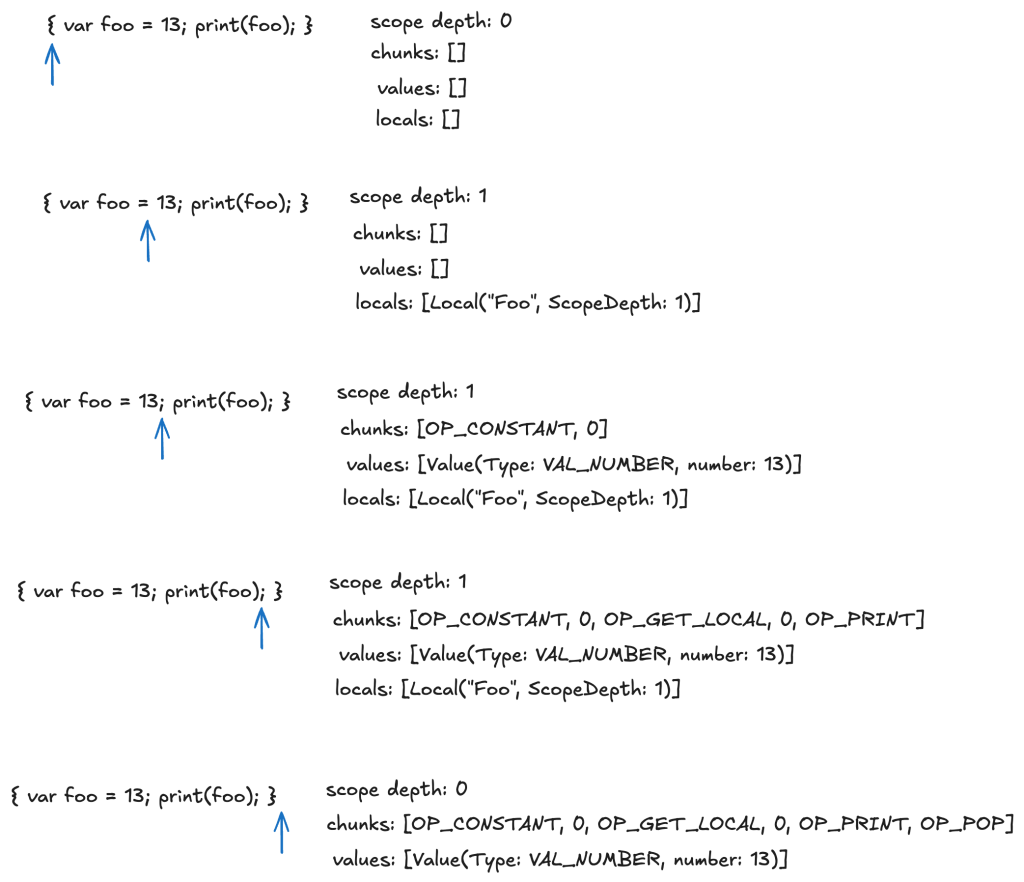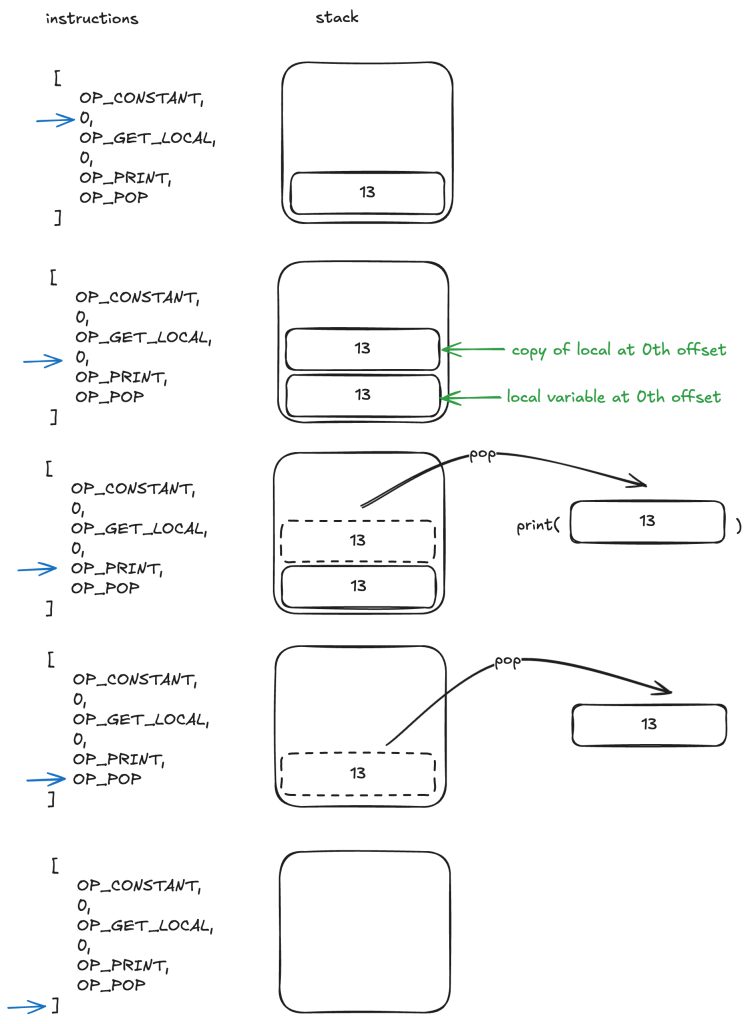in chap 22 of crafting interpreters, bob nystrom walks through the implementation of local variables. it makes efficient use of memory by tracking local variable position and scope metadata during compilation phase and leveraging that to locate the correct value in the immediate proximity within the execution stack (where we expect all local variables to end up, unlike globals which are late bound and may be defined far away from where they’re actually used).
what i found most complicated about this chapter is the number of states you need to track and hold to understand how the compile and runtime stages work together. it helped me to write down a few essential states in trying to understand it, so i figured i translate those notes to some sort of visualization because i think it might help others too
here’s a visualization of the compile phase where we’re converting the tokens into a byte code instruction sequence (chunks). the arrow indicates the parse position where the vm is pointing to the source code and the variables on the right represent the state at that point.
side note: i didn’t bother doing character by character – i moved the arrow to positions where there are actually side-effects since not all tokens produce the sideeffects i actually care about for this demo.

and here is the runtime execution of the resulting byte code sequence. as you can see, the first thing that happens is that the literal number 13 is pushed onto the stack. every variable declaration’s value will be known at compile time.
however, notice that there is no information about what the name of that constant is. is 13 the value of “foo”? or something else? what’s cool about this implementation is that it doesn’t matter at this time because during the compilation phase, we’ve already figured out where that local is going to be on the stack for the variable foo. based on the information about locals and off sets in the previous phase, it’s going to be at position or offset 0 based on the metadata from the locals array that was getting constructed at compile time.
